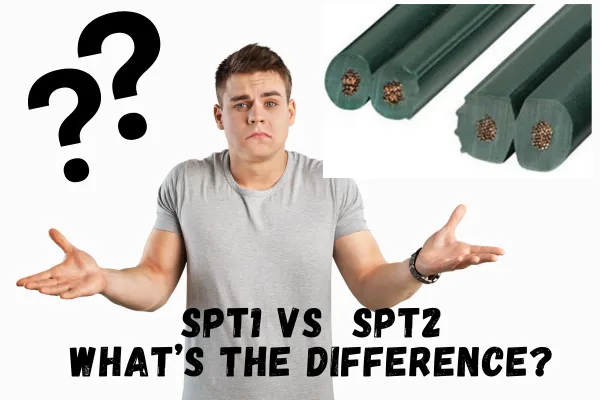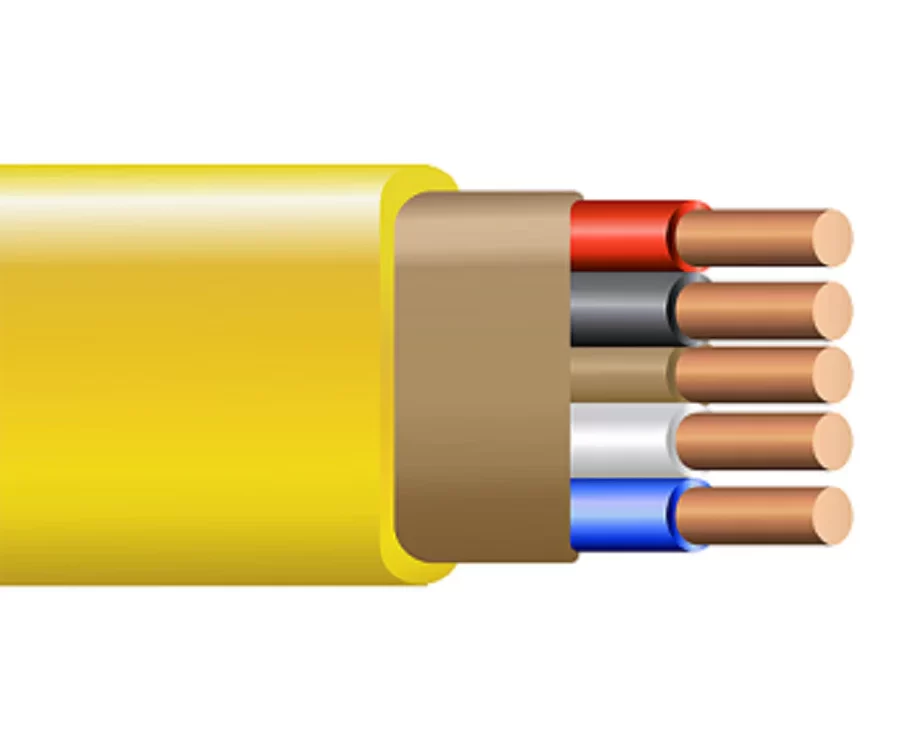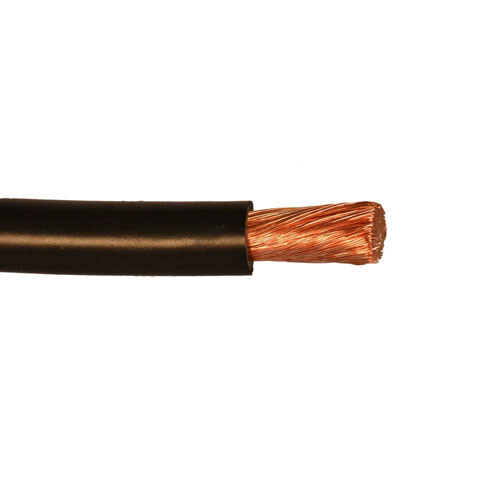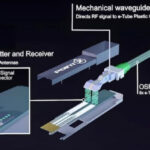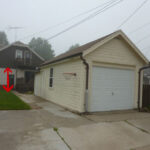- Home
- Products
Power Cables
- Low Voltage Cables - LV
- ——Low Voltage Non-armored Copper Power Cable
- ——Low Voltage Non-armoured Aluminum Power Cable
- ——Low Voltage Steel Tape Armoured Power Cable
- Medium Voltage Cables - MV
- ——Medium Voltage Armored Power Cable
- ——Medium Voltage Non-armored Power Cable
- High Voltage Cables-HV
- Steel Wire Armored Cable (SWA Cable)
- ——Single Core AWA Armoured Cable
- ——2 Core SWA Armoured Cable
- ——3 Core SWA Armoured Cable
- ——4 Core SWA Armoured Cable
- ——5 Core SWA Armoured Cable
- ——SWA Armoured Cable Specifications
- XLPE Insulated Power Cables
- ——XLPE Insulated Single Core Copper Cable
- ——XLPE Insulated 2 Core Copper Cable
- ——XLPE Insulated 3 Core Copper Cable
- ——XLPE Insulated 4 Core Copper Cable
- ——XLPE Insulated 5 Core Copper Cable
- ——XLPE Insulated 3+1 Core Copper Cable
- ——XLPE Insulated 3+2 Core Copper Cable
- Mineral Insulated Cables
- TPS Cable
Renewable Energy Cables
Control & Signal Cables
- Control Cable
- Instrumentation Cable Supplier & Manufacturer
- High-Performance Coaxial Cable Supplier
- VFD Cable
Installation & Building Wire
- Premium Electrical Wire & Cable Supplier
- MC Cable
- NM-B (Non-Metallic Sheathed) Copper Wire
- UF-B Wire
- MTW Wire
Special Cables
- 4/0 Type W Cable – Heavy Duty Portable Power Solutions
- Trunk Trailer ABS Cable
- SO Cable
- Low Smoke Halogen Free Fire Resistant Cable
- Copper Ground Rods
- Copper Clad Steel Antenna Wire
- Marine Power Cords
- Extra High Voltage (EHV) Submarine Power Cables
- Submersible Pump Wire
- Floating cable
- High Temperature Wire
- EV Automotive High Voltage Silicone Rubber Cable
- Braided Stainless Steel Cable
- LC to LC Fiber Patch Cables
- Your Go-To Flexible Cable Supplier & Manufacturer
- Drag Chain Cables
- Silicone Rubber Low Temperature Resistant Cable
Overhead & Aerial Cables
- AAC Conductor
- Aerial Bundled Cable (ABC Cable) Supplier & Manufacturer
- ——NFC 33-209 ABC Cable
- ——0.6/1kV Aerial Bundle Cable
- ——Medium Voltage ABC Cable
- ——Tree Wire Spacer Cable
- ——Aluminum URD Cable
- ——Aluminum XHHW SER SEU RHH RHW-2 XLP USE-2
- Aerial Insulation Line (AIL)
- Bare Stranded Conductors Manufacturer & Supplier
- ——ACSR Conductor
- ——AAAC Conductors
- ——ACAR Conductor
- ——Bare Copper Stranded Conductor
- ——CCS Conductor
- ——ACS Condutcor
- ——Guy Wire
- Overhead Service Drop Cable / Overhead Service Wire
- ——Weatherproof Covered Line Wire
- ——Duplex Overhead Service Drop Cable
- ——Triplex Overhead Service Drop Cable
- ——Quadruplex Overhead Service Drop Cable
- Concentric Service Cable – Reliable Power Distribution Solutions
- ——Aluminum Concentric Service Cable
- ——Copper Concentric Service Cable
- ——Concentric Service Cable with Communication Pilot
- Telephone Drop Cable for Reliable Voice & Data Transmission
- ——PVC Parallel Drop Wires
- ——PE Parallel Drop Wires
- About us
- News
- Contact us
News
Stay updated with the newest developments, industry trends, and expert knowledge about various types of wires and cables. Explore our news section for valuable information and insights.
- Home
- News
How to Organize Cables and Wires: A Step-by-Step Guide to a Clutter-Free Space
Are you tired of tangled cables behind your desk, under your TV stand, or around your home office? Cable clutter isn't just unsightly—it's a safety hazard, makes cleaning difficult, and can even affect your device performance. This comprehensive guide will show you exactly how to organize cables and wires like a pro, transforming your messy cable situation into a clean, organized setup.
Read moreDifference Between SPT-1 and SPT-2 Wire
When choosing lamp cord or parallel power cord for low-voltage applications like lamps, holiday lights, or small appliances, you’ll often come across SPT-1 wire and SPT-2 wire. While both are widely used in residential and commercial settings, they differ in construction and performance. Understanding these differences helps ensure safety, durability, and proper application.
Read moreWhat Is Low Smoke Zero Halogen Cable?
Low Smoke Zero Halogen (LSZH) cable, also known as Low Smoke Free of Halogen (LSFOH) cable, is a type of wire insulation made with materials that emit limited smoke and no halogen when exposed to high sources of heat or flame. This makes LSZH cable a safer and more environmentally friendly alternative to traditional PVC-insulated cables, especially in enclosed or poorly ventilated areas.
Read moreWhat Is TFFN Wire? A Cost-Effective Wiring Solution for Modern Electrical Systems
In the world of electrical wiring, TFFN wire has become a popular choice due to its flexibility, durability, and affordability. Whether you're working on residential lighting or industrial control panels, TFFN wire offers the right balance of performance and value. So, what exactly is TFFN wire, and why is it so widely used?
Read moreWhat is AWM Wire and How to Choose the Right Type for Your Application
AWM cable, short for Appliance Wiring Material cable, is widely used in internal wiring of electrical and electronic equipment. These cables are designed to meet specific UL (Underwriters Laboratories) standards and are commonly found in household appliances, industrial machinery, automation systems, and electronic devices.
Read moreWhat Is NM-B Wire? Everything You Need to Know About Non-Metallic Sheathed Cable
When it comes to residential wiring, NM-B wire—short for Non-Metallic Sheathed Cable, Type B—is one of the most common and trusted choices used by electricians and contractors across North America. But what exactly is NM-B wire, and why is it so widely used in homes and light commercial buildings?
Read moreWhat Is MTW Wire? Meaning, Specifications, and Uses
MTW wire, short for Machine Tool Wire, is a type of copper building wire commonly used in control cabinets, machine tools, and industrial equipment. Designed to be flexible and durable, MTW wire meets specific UL and NEC standards for safety and performance in wet and dry locations.
Read moreXHHW vs THWN: What’s the Difference Between These Electrical Wires?
When choosing building wire for commercial, industrial, or residential projects, contractors often face the question: XHHW vs THWN – which wire should you use?Both are widely used for power distribution and branch circuits, but they differ in insulation material, moisture resistance, temperature ratings, and applications. In this guide, we’ll break down the differences between XHHW and THWN to help you make the right choice for your project.
Read moreTHHN vs XHHW Wire: What’s the Difference and Which One Should You Use?
When choosing electrical wire for residential, commercial, or industrial applications, you may come across two common types: THHN and XHHW. Both are copper or aluminum conductors used in building wiring, but they differ in insulation material, temperature rating, and environmental performance. In this article, we’ll compare THHN vs XHHW wire to help you understand which is better for your specific needs.
Read more50 Pair Telephone Cable Color Code: Complete Guide for Installers and Technicians
Understanding the 50 pair telephone cable color code is essential for telecommunication professionals, electricians, and installers working with large telephone trunk cables. These cables are commonly used in commercial buildings, PBX systems, and campus networks to carry multiple voice or data lines through a single bundled cable.
Read more- Low Voltage Cables – LV
- Medium Voltage Cables – MV
- High Voltage Cables-HV
- Steel Wire Armored Cable (SWA Cable)
- XLPE Insulated Power Cables
- Mineral Insulated Cable (MICC/MI Cable)
- TPS Cable
- Control Cable
- Instrumentation Cable
- Coaxial Cable
- VFD Cable
- Computer Cable
- Electrical Wire
- MC Cable
- NM-B (Non-Metallic Sheathed) Copper Wire
- UF-B Underground Feeder Cable
- MTW Wire
- Prefabricated branch cables
- 4/0 Type W Cable
- Trunk Trailer ABS Cable
- SO Cable
- LSZH Cable
- Copper Ground Rods
- Copper Clad Steel Antenna Wire
- High Temperature Wire
- EV Automotive High Voltage Silicone Rubber Cable
- Submersible Pump Wire
- Floating cable
- LC to LC Fiber Patch Cables
- Flexible Cable
- Drag Chain Cables
- Silicone Rubber Low Temperature Resistant Cable
- All-Aluminum Conductors for Overhead Power Lines
- Aerial Bundled Cable (ABC Cable)
- Aerial Insulation Line (AIL)
- Bare Stranded Conductors
- Wind Farm Cables
- Overhead Service Drop Cable
- Concentric Service Cable
- Telephone Drop Cable
- Solar PV Cable
Recent Posts


